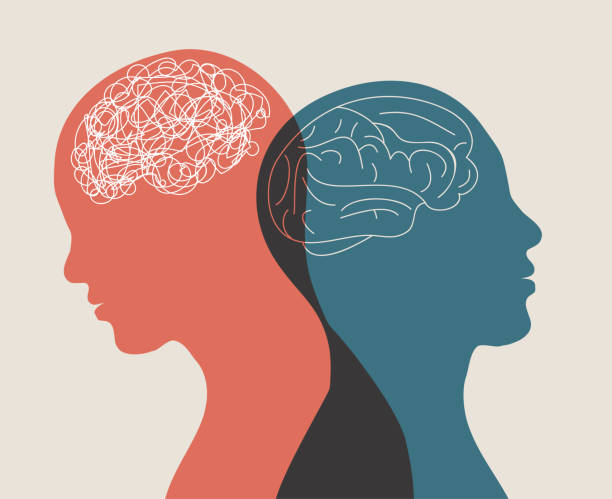Introduction
The armed conflict between India and Pakistan, particularly over the disputed region of Kashmir, has led to significant psychological repercussions for civilians caught in the crossfire. While geopolitical analyses often dominate discussions, the mental health toll on affected populations remains underexplored.
Read More- Sleep and Mental Health
Prevalence of Psychological Disorders in Conflict Zones
Exposure to armed conflict is a well-documented risk factor for various mental health disorders. In the context of Kashmir, a region that has witnessed decades of violence, studies have reported alarmingly high rates of psychological distress among civilians. A study conducted by Médecins Sans Frontières (2015) found that nearly 45% of adults in the Kashmir Valley exhibited symptoms of mental distress, with 41% showing signs of probable depression, 26% probable anxiety, and 19% probable post-traumatic stress disorder (PTSD).(AP News)
These findings are corroborated by other research. For instance, a study published in the Journal of Aggression, Maltreatment & Trauma reported significant levels of PTSD and depression among young adults exposed to armed conflict in Kashmir (Bhat et al., 2020). Such high prevalence rates underscore the urgent need for mental health interventions in conflict-affected regions.
Factors Contributing to Psychological Distress
Several factors contribute to the heightened psychological distress observed among civilians in conflict zones:

1. Continuous Exposure to Violence: The persistent threat of violence, including encounters with armed forces, insurgent attacks, and cross-border shelling, creates a pervasive sense of insecurity. This chronic exposure to traumatic events can lead to the development of PTSD and other anxiety disorders (Varma, 2023).
2. Displacement and Loss: Many civilians have been displaced from their homes due to military operations or threats of violence. The loss of property, livelihood, and community support systems exacerbates feelings of helplessness and grief, contributing to depression and anxiety (Purgato et al., 2018).
3. Stigmatization and Social Isolation: Mental health issues are often stigmatized in South Asian societies, leading individuals to conceal their symptoms and avoid seeking help. This social isolation can worsen psychological conditions and hinder recovery (AP News, 2023).
4. Limited Access to Mental Health Services: Conflict-affected regions often lack adequate mental health infrastructure. In Kashmir, for example, the number of mental health professionals is insufficient to meet the needs of the population, leading to unmet treatment needs and prolonged suffering (Varma, 2023).
Impact on Specific Populations
Two of the most vulnerable populations during times of war include-
Children and Adolescents
Children and adolescents are particularly vulnerable to the psychological effects of armed conflict. Exposure to violence during formative years can disrupt normal development and lead to long-term mental health issues. Studies have shown that children in conflict zones exhibit symptoms of PTSD, depression, and behavioral problems at higher rates than their peers in peaceful regions (Bhat et al., 2020).

Women
Women in conflict zones face unique challenges, including increased risk of sexual violence, loss of family members, and the burden of caring for traumatized children. These stressors contribute to higher rates of depression and anxiety among women in these regions (Purgato et al., 2018).(PMC)
Coping Mechanisms and Resilience
Despite the adverse conditions, many civilians develop coping mechanisms to deal with the psychological impact of conflict. These include:

- Community Support: Strong social networks can provide emotional support and practical assistance, helping individuals cope with stress.
- Religious and Cultural Practices: Engaging in religious rituals and cultural traditions can offer a sense of normalcy and hope.
- Psychological Interventions: Access to counseling and therapy, when available, can significantly improve mental health outcomes.
However, the effectiveness of these coping mechanisms is often limited by the ongoing nature of the conflict and the scarcity of mental health resources.
Recommendations for Addressing Mental Health Needs
To mitigate the psychological impact of armed conflict on civilians, several measures are recommended:
- Strengthening Mental Health Infrastructure: Investing in mental health services, including training more professionals and establishing clinics in conflict zones, is crucial.
- Community-Based Interventions: Programs that leverage existing community structures can increase access to mental health support and reduce stigma.
- Integration of Mental Health into Primary Care: Incorporating mental health services into primary healthcare can facilitate early identification and treatment of psychological disorders.
- Policy Initiatives: Governments should prioritize mental health in their policy agendas, allocating resources and formulating strategies to address the needs of conflict-affected populations.
Conclusion
The psychological impact of the India-Pakistan conflict on civilians is profound and multifaceted. Addressing this issue requires a concerted effort from governments, healthcare providers, and communities to develop and implement effective mental health interventions. By acknowledging and addressing the hidden wounds of war, we can pave the way for healing and resilience among affected populations.
References
Médecins Sans Frontières. (2015). Kashmir: Violence and mental health. https://www.msf.org/kashmir-violence-and-mental-health
Purgato, M., Gastaldon, C., Papola, D., van Ommeren, M., Barbui, C., & Tol, W. (2018). Psychological therapies for the treatment of mental disorders in low- and middle-income countries affected by humanitarian crises. Cochrane Database of Systematic Reviews, (7). https://doi.org/10.1002/14651858.CD011849.pub2
Varma, S. (2023). The invisible scars: Mental health in conflict-ridden Kashmir. AP News. https://apnews.com/article/0a7cabe97c874a5c3e2884ebaf2718bb
Subscribe to PsychUniverse
Get the latest updates and insights.
Join 3,022 other subscribers!
Niwlikar, B. A. (2025, May 15). The Hidden Wounds of Armed Conflicts: Psychological Impact of Armed Conflict & 4 Recommendations to Tackle It. PsychUniverse. https://psychuniverse.com/hidden-wounds-of-armed-conflicts/



